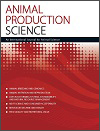Animal Production Science
Volume 64
Number 18 2024
Cows often mobilise bone minerals during lactation when intakes of phosphorus are lower than requirements, but these must be replenished. Phosphorus-deficient cows replenished bone minerals post-weaning when fed a high-phosphorus diet. Replenishment occurred more rapidly in cows with low bone minerals, and when the diet provided sufficient metabolisable energy and protein for high-liveweight gain. Post-weaning P supplementation of cows in low P status is expected to at least partially replenish their bone minerals.
Southeast Asia’s forecast rise in human population and demand for animal-sourced food is likely to increase absolute greenhouse-gas emissions from the region’s livestock sector. There are substantial animal and feed management opportunities to suppress the increase in these emissions by improving animal productivity. Targeting a regional reduction in emissions per unit animal product (emission intensity) instead of absolute emissions offers a means to support food security, while controlling emission of livestock derived greenhouse gases.
This article belongs to the collection: SAADC 2023.
Quinine shows promise in improving the sustainability of pig farming by enhancing piglet growth while addressing environmental concerns linked to zinc oxide. Our studies revealed that quinine, comparable to traditional supplements, not only boosts piglet growth but also does so independently of zinc oxide showing promise as a viable alternative. This finding suggests that quinine could play a crucial role in promoting more sustainable pig nutrition practices.
Undigestible neutral detergent fibre (uNDF) has become a standard feed analysis overseas to properly quantify forage digestibility. However, this analysis is not available locally in New Zealand and the method implemented in our laboratory by using an alternative bag (F57) was not validated. The results of the current validation suggest that the F57 bag is suitable for uNDF determination, but that some further modifications to the protocol need to be made to improve the accuracy and precision of the uNDF determination.
This article belongs to the collection: Australasian Dairy Science Symposium 2024.
There has been increasing global interest in producing milk free from the β-casein A1 allele because of the health benefits it may have. We evaluated the genetic variation in the bovine β-casein gene regarding A1-like and A2-like variants and demonstrated that the A2-like variant correlates with higher estimated breeding values (EBVs) for milk, protein, and fat yields, and lower EBVs for fat and protein percentages. Our findings contribute to evaluating the consequences on dairy performance of selection for the A2-like variant.
Weaning stress can severely affect piglet growth, nutrient utilization and immune function. This study found that combining dietary supplements fructo-oligosaccharides (FOS) and Bacillus licheniformis (BL) significantly improved feed efficiency, nutrient digestibility, protein metabolism, immune-cell counts, and organ developments in weaned piglets. These findings have highlighted a sustainable, antibiotic-free strategy to support piglet development during the critical weaning transition, promoting healthier and more efficient pig-farming practices.
Vitamin D is particularly important for livestock reared indoors in intensive production systems, due to its low levels in dietary sources, intense development of the animals’ skeletal system and accelerated weight gain. We explored supplementing piglet diets with active vitamin D in its glycoside form. Adding these supplements to diets already containing adequate vitamin D did not further increase serum D concentrations, but did improve general health.
Ethiopia is home to 52.4 million goats, which play a vital role in the livelihoods of resource-poor farmers. Despite their importance, goat production is often characterized by low productivity, largely owing to the absence of well-defined breeding objectives that address the needs and aspirations of farmers amidst various challenges. Therefore, breeding objectives developed through active farmer participation are essential to ensure the sustainability of breeding programs, increase flock profitability, and improve the livelihoods of goat keepers.
Grazing of cereal forage by lambing ewes has reduced lamb survival compared with grazing legume pastures. This study compared moving ewes from a legume pasture to oats for lambing and found no reduction in survival in the Oats group compared with continued grazing of legumes. Producers may safely graze lambing ewes on oats when supplemented with calcium, magnesium and salt, and differences in lamb survival with forage type may be associated with the capacity to meet the energy requirements of ewes.





